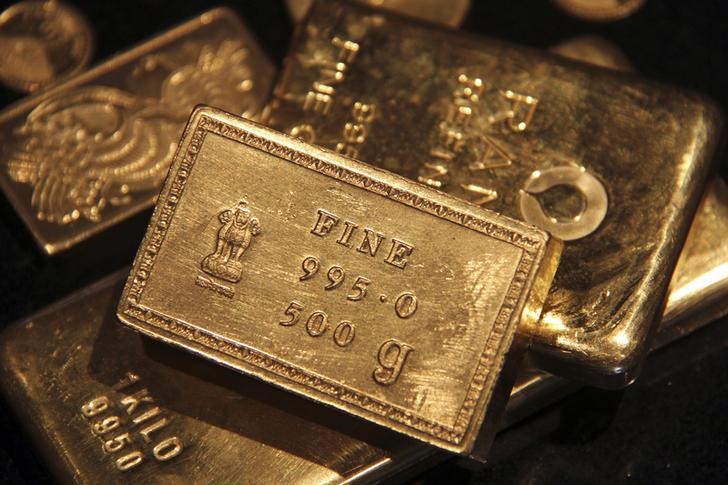By Barani Krishnan
Investing.com - Gold prices dipped on Friday even as they clinched a third straight weekly gain. But longs hoping to break above $1,900 were stopped $10 short of the target, proving sentiment for the yellow metal wasn’t as hot yet as they thought.
Gold for June delivery on New York’s Comex settled at $1,876.70 an ounce, down $5.20, or 0.3%, on the day. For the week, the benchmark gold futures contract rose 2%, extending last week’s 0.7% gain and the 3.3% advance the week prior.
More importantly though, Friday’s peak was $1,890.15 — the second time this week that June gold had missed the $1,900 target by just about $10. The first occasion was on Wednesday when it got to as high as $1,891.25.
The spot price of gold, reflective of real-time trades in bullion, was at $1,877.45 after an intraday high at $1,889.40.
Traders and fund managers sometimes decide on the direction for gold by looking at the spot price — which reflects bullion for prompt delivery — instead of futures.
A break above $1,900, particularly $1,920, will bring gold above the lows of the year, returning it to positive territory for 2021. It could also set the path for a recapture of the high $1,900s pivotal for those hoping to see a return to August record highs of above $2,000.
This week was significant for gold with more than a handful of analysts predicting a crack of the $1,900 ceiling as the Federal Reserve appears determined to stay with its ultra-low interest rates and accommodative monetary policy.
This is despite a raging debate on Wall Street that the central bank might be forced to tighten monetary policy quicker than it expects as inflation builds from soaring commodity prices.
“Gold bulls are pausing for breath after a six-session winning run,” said Sophie Griffiths, who heads U.K. and EMEA market research for online trading platform OANDA.
“The bottom line is that any rise in US interest rates is still a long way off. The low-interest-rate environment is set to stay for some time yet, which is supportive of non-yielding gold.”
Data since last month on consumer and producer prices, industrial production and consumer confidence have all ticked higher. Prices of everything from houses to the lumber that goes into building them have also soared through the proverbial roof, scaring economists into believing that inflation this year could be at its highest in 35 years.
The Federal Reserve acknowledges the price pressures arising from bottlenecks in U.S. supply chains struggling to cope with demand in an economy reopening after months of pandemic-suppression.
But the central bank insists that these inflationary pressures are “transitory” and will fade as the economy makes a full recovery from the pandemic. It also says it does not see the need for now to raise interest rates.
Such an environment heightens gold’s natural role as an inflation hedge, say longs who are emboldened to attempt first a return to $1,900 levels last seen in January, before a further push to record highs of around $2,100 set in August.
